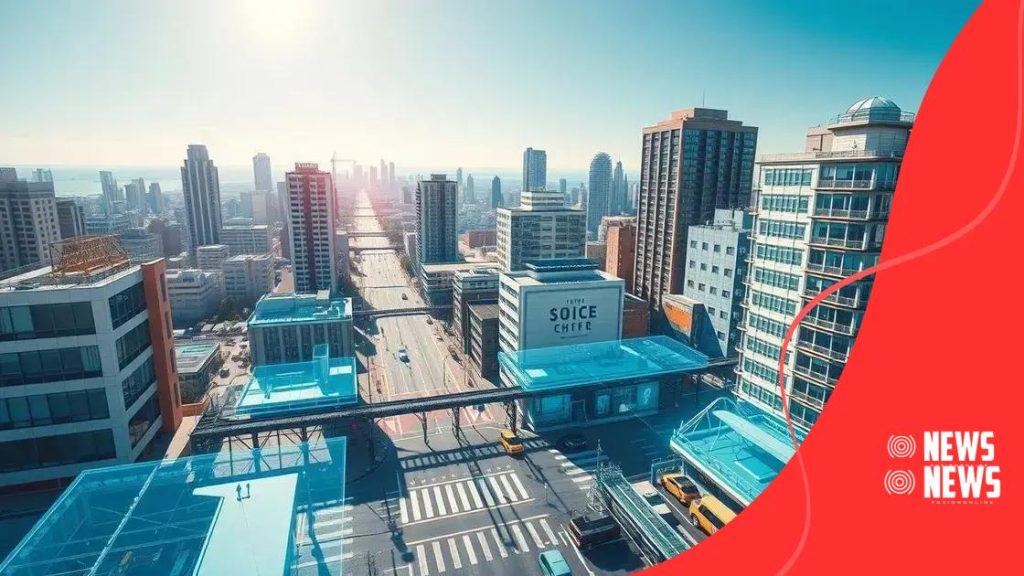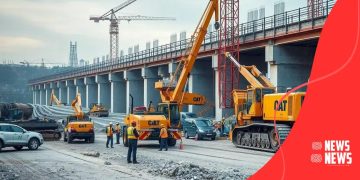Digital twins: revolutionizing urban planning and infrastructure

Digital twins are virtual models that enhance urban planning and infrastructure, improving sustainability, efficiency, and community engagement while addressing challenges related to data management and integration.
Digital twins are emerging as a game-changer in urban planning and infrastructure management. By creating virtual replicas of physical entities, cities can optimize resources and enhance decision-making processes. Curious about how this technology can shape our urban landscapes?
Understanding digital twins in urban planning
Digital twins are becoming increasingly important in urban planning. They are virtual models of physical assets, such as buildings or entire cities, used to simulate, analyze, and optimize various processes.
By leveraging these digital representations, planners and engineers can visualize complex systems and test scenarios before implementing changes in the real world.
How Digital Twins Work
Essentially, a digital twin gathers data from sensors, creating an accurate, real-time replica. This allows for effective management and responsive adjustments in urban environments. For example, waste management and energy use can be optimized more efficiently.
Key Benefits
- Improved decision-making through data-driven insights.
- Enhanced collaboration among stakeholders.
- Potential for cost reductions by identifying inefficiencies.
These advantages facilitate better urban sustainability and resilience by enabling planners to simulate potential developments and their impacts. Imagine a city where every change in traffic flow or energy consumption could be tested in a digital twin environment before any physical changes are made.
Moreover, the use of digital twins allows for engaged citizen participation. By informing the public of potential changes through visual and interactive models, urban planning becomes a more inclusive process.
As cities continue to grow and evolve, understanding and integrating digital twins will be crucial. This technology not only shapes the present but also informs future developments, blending innovation with infrastructure.
Benefits of digital twins in infrastructure
The use of digital twins in infrastructure brings several significant benefits. By creating virtual representations of physical structures, cities can enhance planning, maintenance, and overall management of their resources.
One key advantage is the ability to improve operational efficiency. With a digital twin, infrastructure managers can monitor real-time data to identify and address issues before they escalate. This proactive approach minimizes downtime and reduces repair costs.
Enhanced Data Insights
Digital twins allow for deeper data analysis. They aggregate data from various sources, such as sensors and IoT devices, providing a comprehensive view of how different infrastructure components interact. This information can lead to better decision-making.
Key Benefits
- Increased reliability through predictive maintenance.
- Lower operational costs by optimizing resource usage.
- Enhanced safety by simulating potential risks and outcomes.
Another benefit is sustainability. By utilizing digital twins, cities can design infrastructure that minimizes environmental impact. They can simulate energy efficiency and resource conservation techniques, allowing planners to create greener solutions.
Additionally, digital twins enhance collaboration among stakeholders. Different teams can access the same digital model, aligning efforts across planning, construction, and maintenance. When everyone is on the same page, projects run more smoothly.
As infrastructure continues evolving, the integration of digital twins proves essential. This technology supports cities in becoming more adaptive and resilient, prepared for future challenges.
Case studies: cities utilizing digital twins

Many cities around the world are already implementing digital twins to enhance urban planning and management. These case studies showcase how this innovative technology can transform urban environments.
One notable example is Singapore. The city-state has created a detailed digital twin that captures extensive data about its infrastructure and operations. This model aids in urban planning, environmental management, and disaster response. The digital twin allows planners to test scenarios and visualize the potential impact of new developments.
Barcelona’s Smart City Initiative
Another impressive case is Barcelona, which utilizes digital twins in its smart city initiative. The city combines data from various systems, such as transportation and waste management, to create a cohesive digital model. This smart system enables city officials to optimize resources and improve citizen services.
Copenhagen’s Climate Resilience
Copenhagen is also leading the way with its digital twin technology. The city has developed models to assess and simulate the effects of climate change. This enables proactive planning for flooding and other climate-related challenges. By leveraging real-time data, the city can make informed decisions to enhance sustainability and resilience.
- Singapore: Comprehensive urban planning model.
- Barcelona: Smart city integration for improved services.
- Copenhagen: Climate resilience through simulation.
These examples demonstrate the versatility and importance of digital twins in modern urban planning. As more cities adopt this technology, they can enhance their infrastructure and governance, making urban environments smarter and more sustainable.
Challenges and limitations of digital twins
While digital twins offer many benefits for urban planning and infrastructure, there are also several challenges and limitations associated with their implementation. Understanding these challenges is crucial for cities looking to adopt this technology effectively.
One major challenge is the high cost of implementation. Creating and maintaining a digital twin requires significant investment in software, hardware, and training. Cities need to ensure they allocate sufficient budget to cover these expenses.
Data Management Issues
An essential aspect of digital twins is the data they rely on. Cities must manage vast amounts of data from various sources, which can be cumbersome. Ensuring data accuracy and integration is vital for effective analysis and decision-making.
Interoperability Concerns
Another limitation is interoperability. Different systems and platforms may not communicate well with each other. This can hinder the full potential of digital twins, as data silos can prevent comprehensive insights and holistic management.
- High implementation costs can be a barrier.
- Data management can become overwhelming without proper systems.
- Interoperability issues prevent seamless data sharing.
Moreover, there are privacy and security concerns. As cities collect more data to feed their digital twins, they must protect sensitive information. Cybersecurity measures become essential to prevent data breaches and ensure public trust.
Finally, a lack of standardization in practices and technologies can complicate the adoption process. Different cities might approach digital twins in varied ways, making it harder to share learnings and best practices across regions.
The future of urban development with digital twins
The future of urban development is set to be reshaped by digital twins. These innovative models simulate real-world conditions, enabling cities to adapt and thrive in the face of evolving challenges.
One significant aspect of the future is enhanced sustainability. With digital twins, cities can model various scenarios to reduce their environmental impact. They facilitate efficient resource management, allowing for smarter energy and water use, ultimately promoting greener urban living.
Integration of Smart Technologies
Moreover, the integration of smart technologies will likely become more seamless. Digital twins will work alongside the Internet of Things (IoT) devices, creating a connected ecosystem. This integration will provide valuable insights, helping city planners make informed decisions about infrastructure and community needs.
Enhanced Resident Engagement
Another exciting development is the potential for enhanced resident engagement. With interactive digital twins, citizens can visualize proposed changes in their neighborhoods. This transparency encourages public participation, giving residents a voice in the planning process.
- Sustainable urban management practices.
- Smart integration of IoT devices for real-time data.
- Increased citizen involvement through visualization tools.
As cities continue to grow and face challenges like climate change and urbanization, digital twins will play a pivotal role. They will help create more resilient infrastructures, making cities better prepared for the future.
Finally, the collaboration between different sectors will significantly increase. Government, businesses, and academia will come together, sharing data and insights through digital twin technologies. This collective approach will facilitate innovation and drive forward-thinking urban solutions.
In summary, the future of urban development is bright with the integration of digital twins. These innovative technologies will enable cities to create more sustainable environments, improve efficiency, and foster community engagement. As urban areas grow, leveraging digital twins will help address challenges effectively and create resilient infrastructures. Collaboration among stakeholders will be key, paving the way for smarter, more adaptable cities that can thrive in the future.
FAQ – Frequently Asked Questions about Digital Twins in Urban Development
What are digital twins?
Digital twins are virtual models of physical entities, like buildings or cities, that simulate real-world conditions for better planning and management.
How can digital twins improve sustainability?
They help cities manage resources more efficiently, allowing for reduced environmental impact and promoting greener urban living.
What role do digital twins play in community engagement?
Digital twins provide visualizations that promote citizen participation, making it easier for residents to understand and influence urban planning decisions.
What challenges do cities face when implementing digital twins?
Challenges include high implementation costs, data management issues, interoperability concerns, and ensuring data security and privacy.





